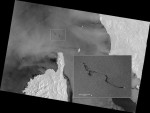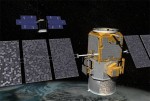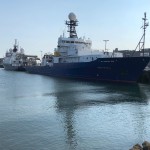Featured
Tuesday, October 16th, 2018
A new report from the United Nations Intergovernmental Panel on Climate Change (IPCC) forwarded the need to protect and restore forests just two weeks after more than 200 organizations, scientists and elected officials released the #Stand4Forests platform in the United States. The newly released platform aligned with the IPCC report in demanding the protection of

Tuesday, October 9th, 2018
On Oct. 7, 2018, a Tunisian cargo ship is reported to have struck the hull of a Cypriot container ship in waters north of the French island of Corsica. There were no casualties, but the collision caused a fuel leak that resulted in an oil slick about 20 kilometers long. Although the collision occurred in

Tuesday, October 2nd, 2018
CloudSat and CALIPSO, designed to complement each other in the 1990s, were launched together on the same rocket in 2006. Then they spent more than 10 years orbiting Earth in formation with a coterie of other satellites in what’s known as the A-Train (afternoon constellation). Flying together enables the A Train satellites to gather diverse

Tuesday, September 25th, 2018
According to a new research report by Global Market Insights Inc., the mobile mapping market is being propelled by the increasing adoption of mobile devices such as smartphones and tablets across the globe. Smartphone users are extensively using mapping applications on their devices for navigation and driving assistance. Furthermore, they also are leveraging GIS and

Tuesday, September 18th, 2018
The Gravity Recovery and Climate Experiment Follow-On (GRACE-FO) mission team plans to switch to a backup system in the Microwave Instrument (MWI) on one of the twin spacecraft. Following the switch-over, GRACE-FO is expected to quickly resume science data collection. A month after launching in May 2018, GRACE-FO produced its first preliminary gravity field map.

Tuesday, September 11th, 2018
The Arctic is rapidly warming, with stronger effects than observed elsewhere in the world. The Arctic regions are particularly important with respect to climate change, as permafrost soils store huge amounts of the Earth’s soil carbon (C). Warming of Arctic soils and thawing of permafrost can have substantial consequences for the global climate, as the

Tuesday, September 4th, 2018
The unprecedented temperatures seen over summer 2018 are a sign of things to come—and a direct result of climate change, according to new Oxford University research. In a newly published report, researchers from the Environmental Change Institute (ECI) at the School of Geography and Environment, Oxford University, who worked in collaboration with the World Weather

Tuesday, August 28th, 2018
Teledyne e2v provided a key component for the highly customized ultraviolet laser detector for the Atmospheric Laser Doppler Instrument (ALADIN) on the European Space Agency’s Aeolus Satellite, which launched on Aug. 22, 2018. Contracted by Airbus Defence & Space, Teledyne e2v developed a unique Charge Coupled Device (CCD) type detector specifically for the mission. The

Tuesday, August 21st, 2018
With a new research plane and a new base to improve its chances of outsmarting Atlantic hurricanes, NASA’s Oceans Melting Greenland (OMG) campaign began its third year of gathering data on how the ocean around Greenland is melting its glaciers. OMG’s first two years of operations already collected the most comprehensive data available on the

Monday, August 13th, 2018
Satellite images of phytoplankton blooms on the surface of the ocean often dazzle with their diverse colors, shades and shapes. But phytoplankton are more than just nature’s watercolors: They play a key role in Earth’s climate by removing heat-trapping carbon dioxide from the atmosphere through photosynthesis. Yet a detailed account of what becomes of that

